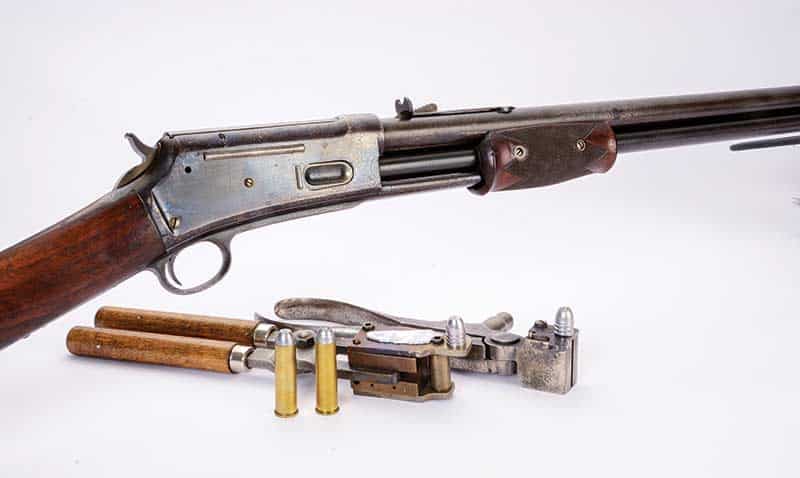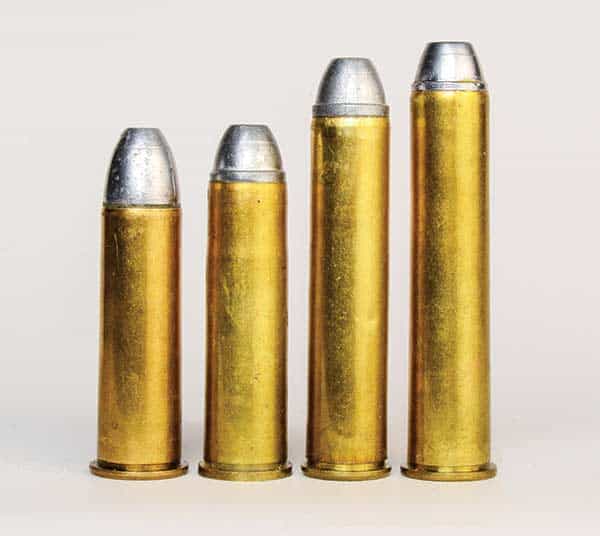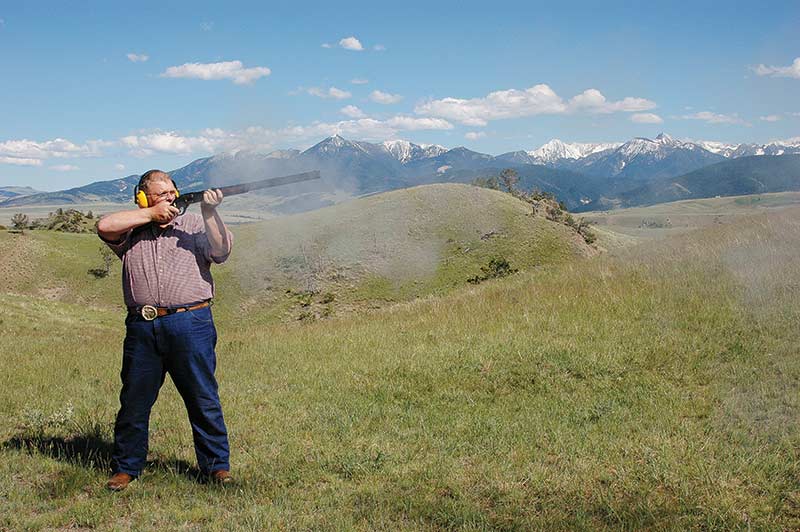From the advent of metallic cartridge ammunition unto this day, .50 caliber rifles have won the hearts and minds of American riflemen. A remarkable variety of rifles chambering the huge .50 BMG are floating about nowadays. Likewise, there was no shortage of .50 caliber rifles in the Old West.
Builders
They were built by all the premier rifle manufacturers of the time. For example, the famous Sharps “buffalo rifles” of the 1870s were made for three lengths of .50 caliber cartridges.
Remington only chambered for one .50. However, their factory turned out 900,000 military and sporting No.1 (rolling blocks) by 1877. A significant portion of them were .50-70s so they were likely only second to the U.S. Government in making .50 caliber rifles. Three different .50 cartridges bore the Winchester name between 1878 and the early 1900s, none of which set great sales records.
The U.S. Government got the .50 caliber ball rolling in 1866 with a conversion of leftover Civil War .58 caliber rifle-muskets to shoot a .50 cartridge of 1¾” case length. Military spec loads for the .50 Gov’t were 450-grain bullets over 70 grains black powder — hence the nickname .50-70. The first .50 Gov’t was the Model 1866. It was followed later by Models 1868 and 1870. They were used all over the west.
Sharps Rifle Company grabbed the government’s idea and literally stretched it. Their rifles also chambered the .50-70 but they also developed a .50 with a 2″ case. It went nowhere and is virtually unknown.
The third was a .50 with 2½” case famous today as .50-90 Sharps, although the Sharps factory always loaded it with 100 grains of black powder. Remington had to stick with the .50-1¾” case because the long hammer spurs of their No.1s wouldn’t allow passage of longer cases. Their factory loads came with 400- and 450-grain bullets, both over 70-grain powder charges.
Winchester
Winchester cornered the repeating rifle market early on but had difficulty in coming up with a .50 caliber repeater. In 1878 they gave it a try with their Model 1876. Case length had to be reduced to 1.94″ and bullet weight was only 312 grains. However, the 95-grain powder charge did give it some oomph. In 1887 Winchester gave .50s another try in their strong Model 1886.
Using a 2.40″ case, they were able to fit 110 grains of black powder under 300-grain bullets. The round was called logically .50-110 but it seems rifles for it were caliber stamped .50 Ex (Express). Winchester’s .50 Express made it into the smokeless powder era and wasn’t dropped from Winchester’s catalogs until 1919.
There is no lack of bogus information about Old West fifties. For instance, despite original factory records proving no Sharps rifles were ever chambered for a .50 cartridge with 3¼” case, misinformation about such existing still abounds. Actually Winchester did chamber their single shot (aka “Model 1885 High Wall”) for a .50 with 3¼” case for a short while.
Duke shooting a Uberti/Cimarron Model 1876 .50-95 with black powder handloads.
Short Is Better
There is also the fallacy .50s were long-range cartridges. They weren’t; their bullets were short and wide. Long range bullets were longer and of lesser caliber. Fifty caliber rifles were meant to smack large animals hard! Out west there were bison, elk, grizzly and moose, and there were horse-mounted native warriors of all sorts roaming the west. A .50 caliber hit on a warrior’s horse effectively put him out of the fight.
Interestingly, some Winchester Model 1876 .50-95, Model 1886 .50-110 and even Colt Lightning pump action .50-95’s carry British proof stamps. They were imported to Africa and India for hunting lions and tigers. Collectors today call them “cat guns” and they bring premium prices. The .50 caliber oomph factor in a repeating rifle was important to big cat hunters.
Velocities given by Old West .50 calibers are not impressive compared to the .50 BMG at 2,700 fps. The .50 Gov’t gave about 1,250 fps and Winchester’s .50 Express could break 1,500 fps.
Starting in 1981 I became a Big Fifty shooter and handloader with a modern Shiloh Sharps Model 1874 .50-90. Since then, I’ve gained experience with a few dozen Old West .50s and I’ve shot whitetail deer, mule deer, elk and bison with them. We who appreciate those Old West big bore rifles should give thanks to manufacturers like Shiloh and C. Sharps, and importers such as Cimarron Arms, for making available modern replica Big Fifties!


